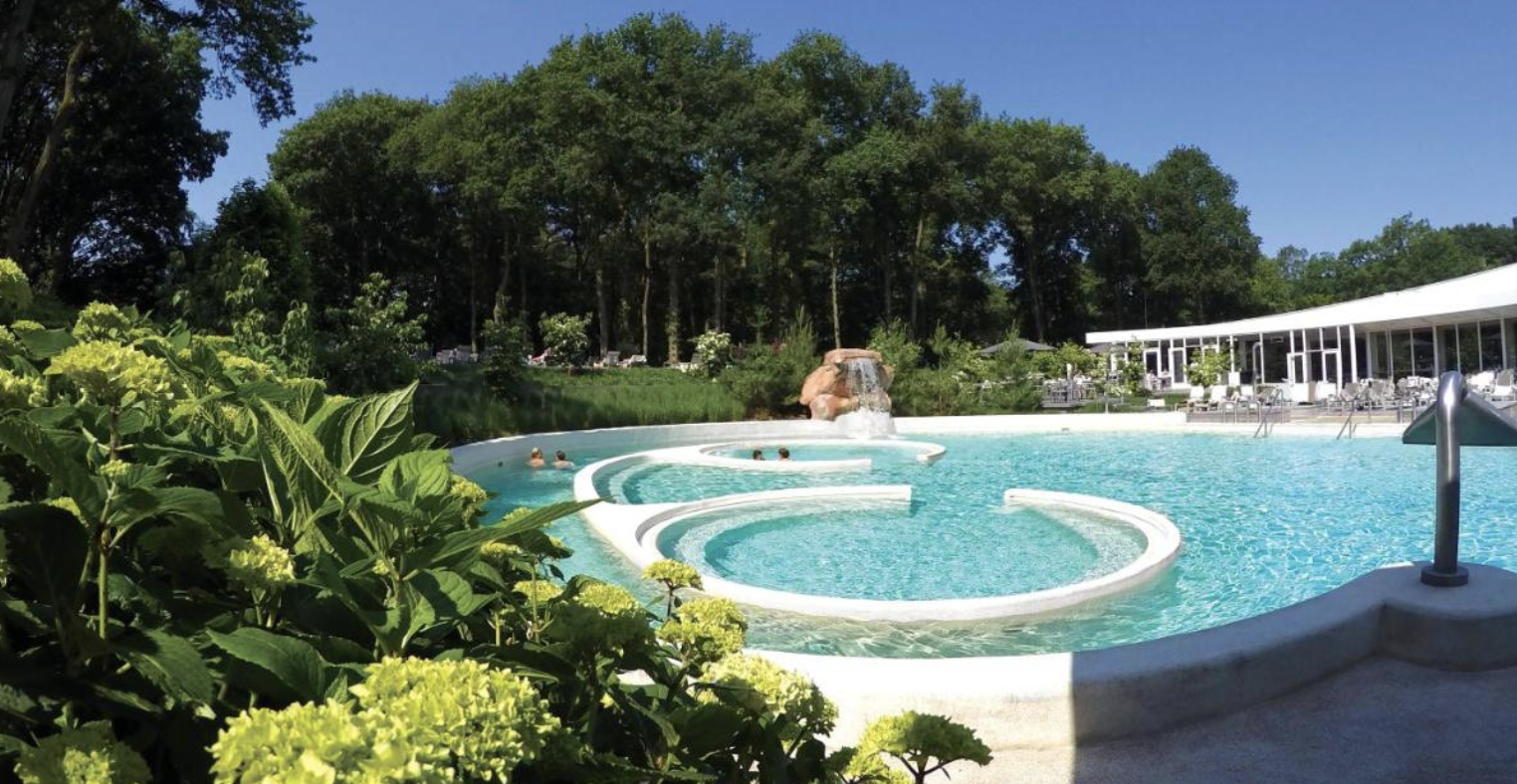If you’re looking for a challenge that will push you to your limits and test your endurance, then the 4 Day Nijmegen March might be just what you need. [Plus a mini Nijmegen travel guide.]
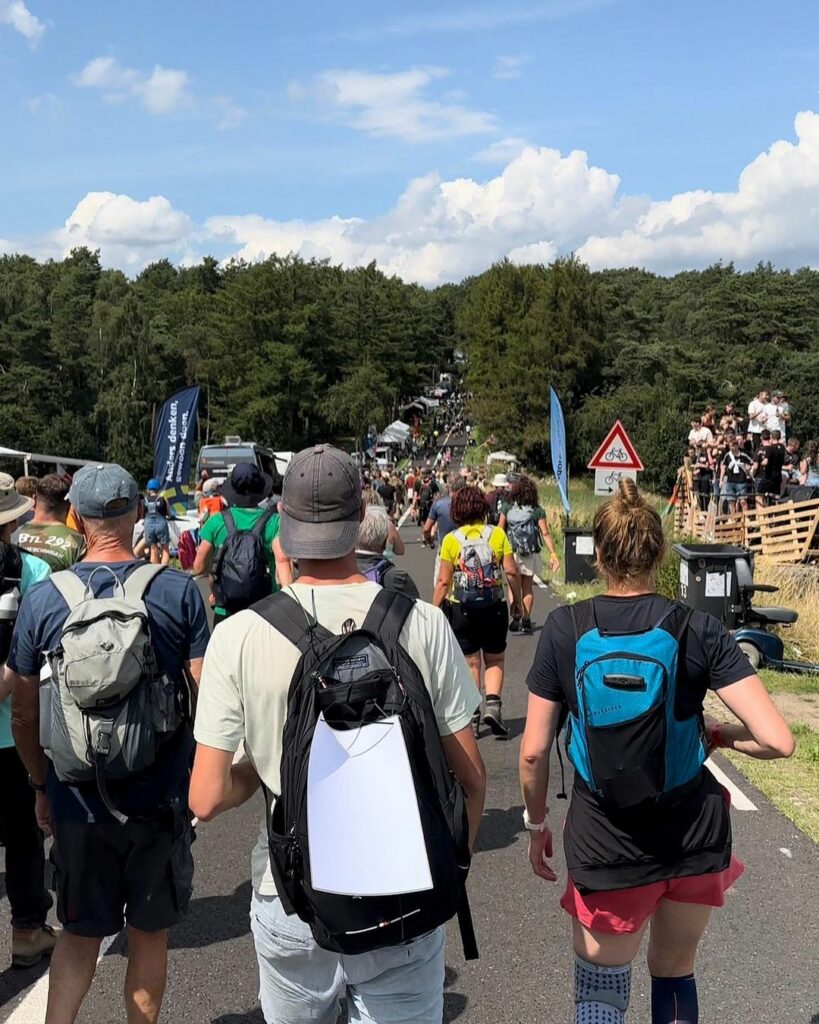
This annual day marching event is not for the faint of heart, but for those who are willing to push themselves to their limits and come out on the other side with a sense of accomplishment and pride.
The 4 Days March is a grueling walk or ruck march that takes place over four days in the city of Nijmegen. It is a series of daily loops starting at the same location at Wedren.
It’s an event that has been taking place since 1909 and has become one of the most famous walks in the world and is in it’s 106th edition.
In this article, I’ll give you all the information you need to know about the 4 Days March, including how to participate, how to train for it, where to stay, and what to expect during the event.
It’s part party, part walk, part community, part memorial and all around fun. It’s a fan favorite of the US Army stationed in Europe.
Key Takeaways for Europe’s Largest Multi-Day Walking Event
- The 4 Days March in Nijmegen is a challenging event that tests your endurance and pushes you to your limits
- To participate, you’ll need to train rigorously and prepare for the physical and mental demands of the event.
- During the event, you can expect to experience a range of emotions, from exhaustion and pain to pride and accomplishment.
- A vast majority of participants are not military, but many nations send a military delegation so it’s very international.
- There are 4 categories: Civilian individual or group and military individual or detachment and this determines your distance and weight carried.
- Sign up for a home stay or book a hotel EARLY – Check availability here.
- Entrance is a lottery system, so ensure you can participate before you book hotels.
What is the 4 Days March (aka ‘Nijmegen’)?
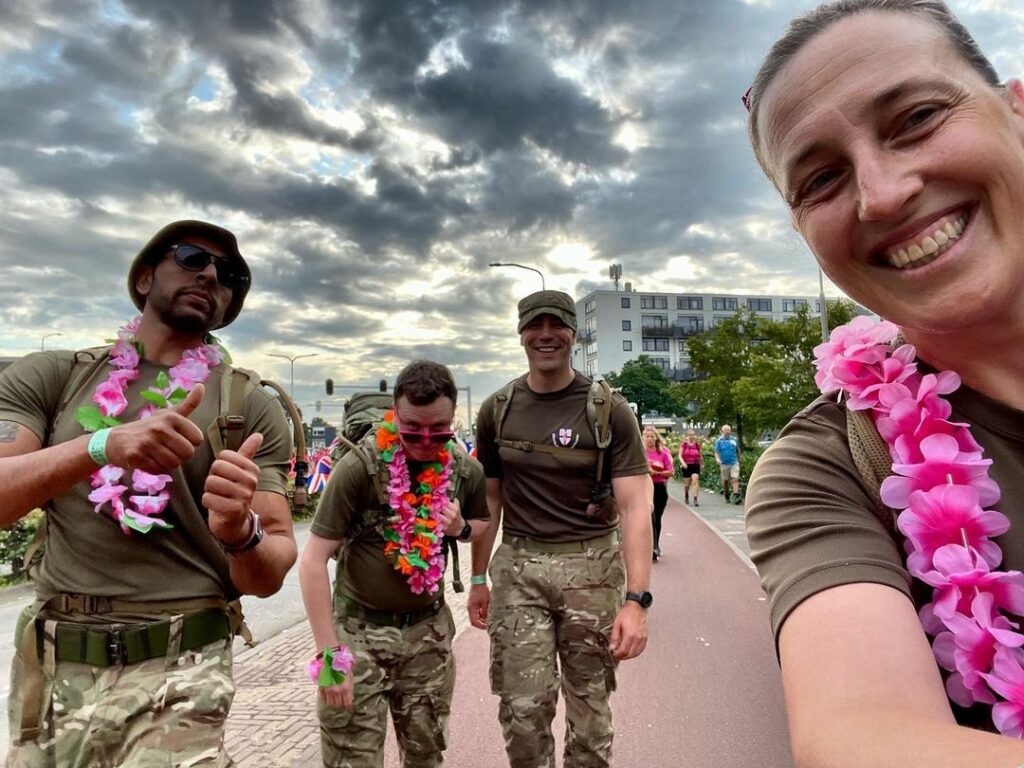
The International Four Days March (also known as the Nijmegen March) is the world’s largest walking achievement event. Every third week in July, around 45,000 participants from over 70 countries gather in Nijmegen, Netherlands to walk 30, 40, or 50 kilometers a day for four consecutive days.
The participants, including military marchers, endure muscle and body aches, blisters, and very tired feet for four days straight.
However, the reward for completing the march is the royally approved medal, the Vierdaagsekruis (Cross of the 4 Days March). In 2023, about 5,000 military personnel participated in the 4 Days March, with around 450-500 of them being from the United States.
For military marchers specifically, there are requirements for participating all four days, including rucking 40km a day along a dedicated military route, wearing a military uniform (including combat boots), and carrying 10kg (approximately 22lbs) of weight in a ruck.
How do I do the 4 Days March?
If you are interested in participating in the Nijmegen 4 Days March, you will need to register online in advance. The registration process is open to both military participants and civilians. The registration fee varies depending on the participant’s nationality and the distance they choose to march.
Once you have registered, you will need to prepare yourself physically and mentally for the march. It is recommended that you start training at least several months in advance. You can find training programs and tips online that will help you prepare for the march.
During the day marches, participants will walk for four consecutive days, covering a distance of either 30 km, 40 km, or 50 km each day.
The loop routes are different each day, and participants will walk through the city of Nijmegen and its beautiful, wooded surroundings.
It is important to follow the rules and regulations of the march, as they are in place to ensure the safety of all participants. The rules include wearing the official march shirt, carrying a valid identification card, and following the designated routes.
How do you train for the 4 Days March?
If you’re planning to participate in the Nijmegen 4 Day March, it’s essential to have a solid training plan. However, surprisingly, there is no official training plan available online.
But don’t worry, I’ve got you covered. There’s a lot of ways to train, this is just one recommendation. Often people start with a weighted vest and then progress to a rucking backpack. They even make women’s centric weighted vests (protect those ladies)!!
Whatever you choose to do: get time on your feet!!!
Here’s my recommended training plan in your lead-up to the Nijmegen 4 Days March:
February
- Sign-up for the Nijmegen
- Start with walking 4-5 miles a week (no weight) until you get comfortable walking a total of 10 miles in one session
- Take breaks as needed
- Switch between your rucking boots and comfortable walking shoes as required
March
- Start rucking with 1/2 the weight required (5kg) for 4-5 miles at a time
- Strive to complete 10-15 miles in one session
- Take breaks as needed
- Switch between your rucking boots and comfortable walking shoes as required
April
Start rucking using the full weight required (10kg)
Accomplish at least 25-30 miles a week
Strive to complete 10-15 miles in one session
Try to limit long training sessions (10+ miles) to no more than three breaksStick to your military boots exclusively
Finalize travel plans if coming from outside the EU
May and June
- Continue using full weight required (10kg)
- Accomplish at least 30-40 miles per week
- Strive to complete at least one session totaling 20 miles
- Try to limit long training sessions (10+ miles) to no more than three breaks
- Stick to your rucking boots exclusively
- July
- Continue using full weight required (10kg)
- Accomplish at least 30-40 miles per week
- Strive to complete at least one session totaling 20 miles
- Try to limit long training sessions (10+ miles) to no more than three breaks
- Stick to your military boots exclusively
- Continue using full weight required (10kg)
The final week/week and a half leading up to Nijmegen, keep training to a minimum (no more than 5-7 miles per session) and stretch a lot.
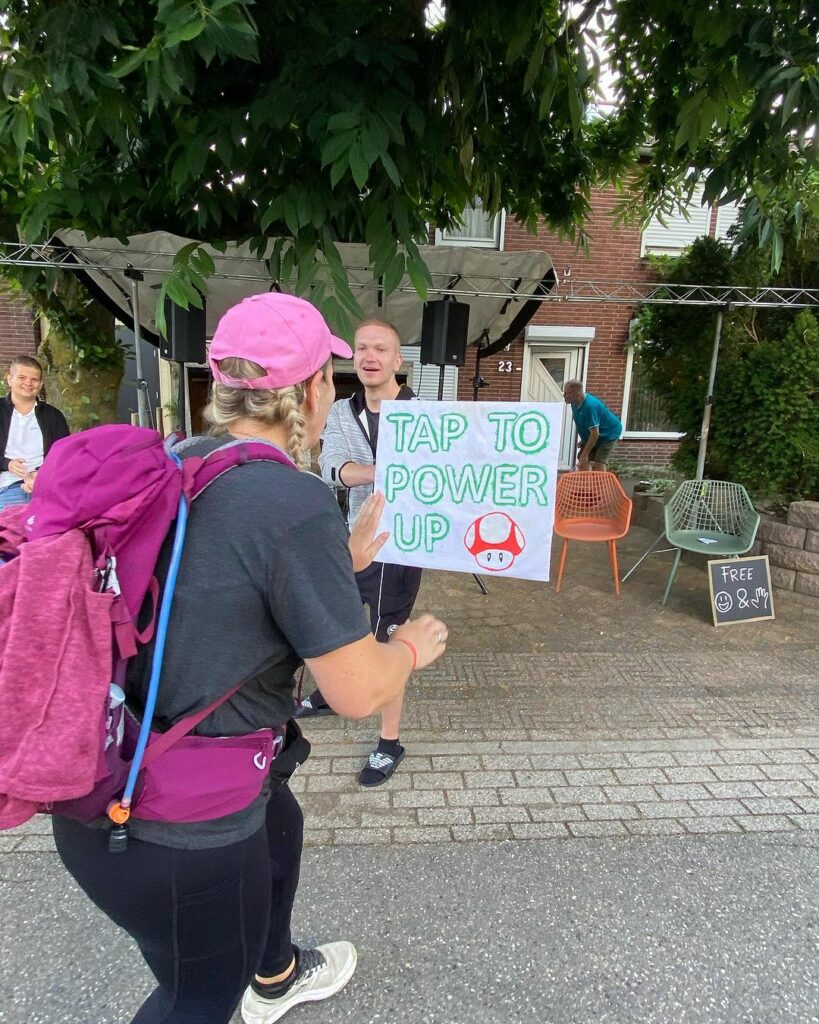
It’s important to note that the above training plan is just a recommendation. You can adjust it to your fitness level and personal preferences.
However, here are some best practices that worked for many participants leading up to the 4 Days March:
- Make sure your family is ok with the amount of time you’ll be dedicating to training.
You’ll be doing 4-5-hour walks around the city multiple times a week as you get closer to the event. If your family doesn’t/won’t support this, it’s going to be much more difficult to finish the 4 Days March.
2. Train like you’ll fight (i.e., train in the right conditions and in the right uniform).
You need to train in the combat boots you’ll be wearing during the event and in your uniform (jeans and long sleeves at a minimum).
3. Focus on recovery: Sleep, nutrition, wellness
You need to eat a good diet that’s calorically dense to compensate for the 8,500 calories you’ll burn during the actual event. Ensure you’re eating a high-protein diet that’s rich in complex carbs with tons of fruits and veggies that provide fiber and vitamins.
Rucking is just like any other workout that requires stretching afterward. Ensure you’re listening to your body and taking care of it!
4. Find what works for you and don’t change anything 6 weeks out.
Take note of how your socks perform while training as well. Do you get rashes on your ankles at 4 miles? 6 miles? 8 miles? Take note and change socks accordingly. Then, during the actual March, mirror the same things you did so you ensure success.
By following these best practices and the recommended training plan, you’ll be better prepared for the 4 Days March. However, keep in mind that the event can be physically demanding, and you may face challenges such as extreme heat, injuries, and blisters. Therefore, it’s essential to have the right gear and take care of your body during the event.
How does lodging/food/restroom breaks/medical/Wi-Fi/etc. work during the March?
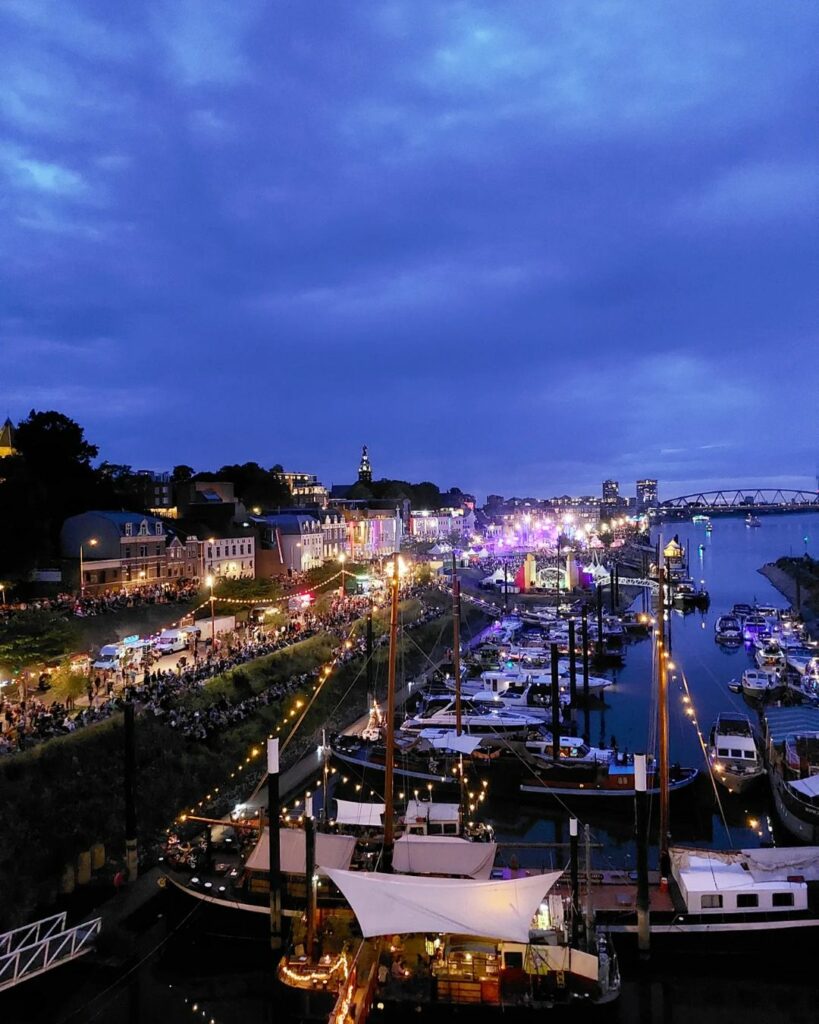
If you’re lucky enough to secure a spot to walk the Nijmegen 4 Days March, you’ll need to know how lodging, food, restroom breaks, medical care, Wi-Fi, and other amenities work during the event.
How to get to the Start
The start is in the same place each day at Wedren. You can walk or take public transport the start.
Skip to detailed transportation info.
Nijmegen March Route
During the 4Days Marches, the routes are signposted by means of coloured arrows. The colour of these arrows matches the colour of the wristband. Participants walking the 50km route follow the red arrows, participants who walk the 40km distance follow the yellow arrows, military participants (starting from Camp Heumensoord) follow the green arrows for their 40km route, and participants on the 30km route follow the blue arrows.
Accommodations for Civilians
There are multiple options, but you’ll want to book early as spots fill up. Skip to the section for non-military hotels.
Lodging for Military
During the march, if you’re a military detachement you’ll be staying at Camp Heumensoord, a Dutch military installation located just south of Nijmegen. You’ll be sleeping in bunk beds with foam mattresses. To ensure a comfortable stay, it’s recommended that you arrive early to secure a bottom bunk. Admission to Camp Heumensoord typically opens the Saturday prior to the march.
Food
Your registration fees include breakfast, lunch, and dinner during the event. Breakfast and dinner are buffet-style, with theoretically endless portions. Breakfast includes bread, hardboiled eggs, yogurts, muesli, meats and cheeses, fruits, jams and jellies, coffee, and tea. Lunch is provided at a dedicated military rest area along the route, and usually consists of noodles with meatballs or chicken.
Vegetarian options are available, but limited. Dinner is a hot, carb-centric meal such as spaghetti with meatballs, lasagna, or rice stir fry, along with a salad station and a few other sides. Military rest areas along the route offer snacks such as power bars and fruit.
Restroom Breaks
There are ample restroom facilities at Camp Heumensoord and along the route. Toilets have running water and doors for privacy. Some restrooms along the route require a small fee of approximately 2 euros. It’s recommended to carry a few coins with you in case you need to use a pay restroom.
Medical Care
Each delegation has its own medical tent, staffed with medical personnel who can provide basic care such as draining blisters and applying bandages. Medical tents are also available at every rest area along the route. While they have the ability to administer IV drips and other treatments, it’s important to note that they are not equipped to handle major medical emergencies.
Charging Stations
Charging stations are available for small electronics such as cell phones and power banks. These stations are located near your delegation’s sleeping quarters and consist of a tent with a computer rack that has approximately 70 plug-in stations. It’s important to note that the plugs are EU style, so US electronics will require an adaptor and must be able to handle 220v.
Wi-Fi
Wi-Fi is available throughout Camp Heumensoord and is of good quality. You can expect to send emails, listen to music, and read e-books without issue. It’s even possible to play video games with minimal lag.
Why Participate in the 4 Days March?
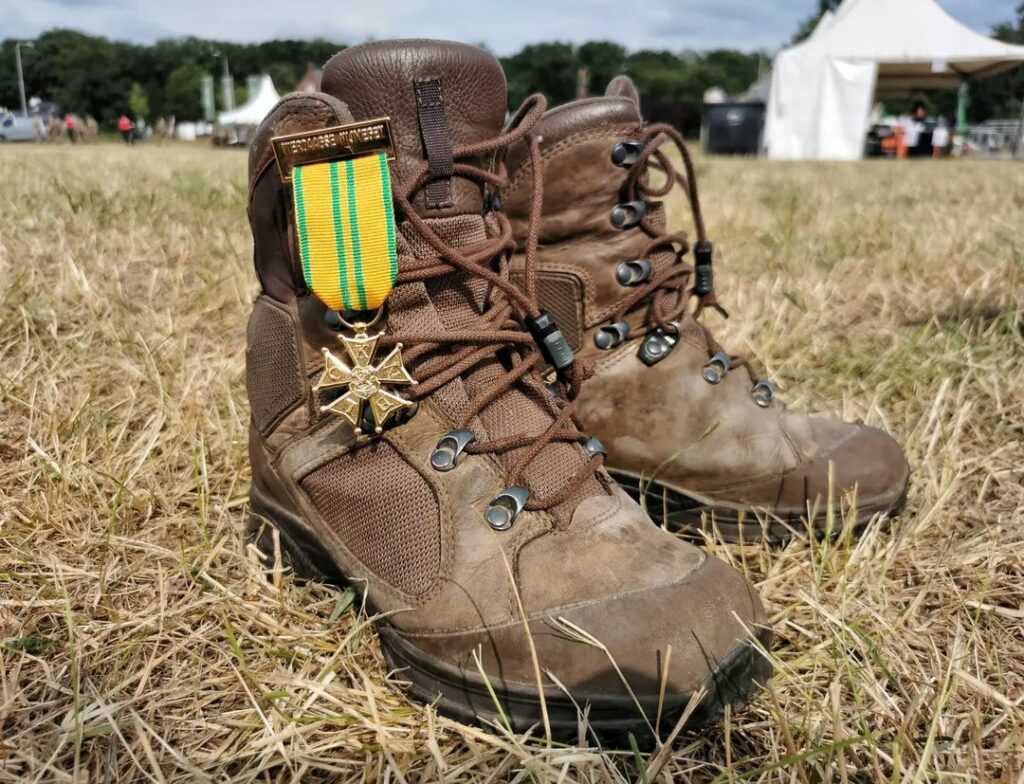
Participating in the 4 Days March is a unique challenge that requires endurance, determination, and a strong motivation. There are various reasons why people choose to participate in this event, including:
- Testing your resiliency: The 4 Days March is a grueling physical challenge that requires participants to ruck 22lbs and march 40km a day for four consecutive days. Many people participate in the event to test their mettle and see if they can endure the trials that come with such an event.
- Stepping outside your comfort zone: The 4 Days March is an opportunity to step outside your comfort zone and push yourself to your limits. It requires mental and physical toughness, and it can be a life-changing experience for those who are willing to take on the challenge.
- Camaraderie: The 4 Days March is an opportunity to bond with like-minded individuals who share a passion for military culture and physical challenges. Participants come from all over the world, and the event provides a unique opportunity to meet and interact with people from different countries and cultures.
- Unique event: The 4 Days March is a one-of-a-kind event that is steeped in history and tradition. It has been held annually since 1909 and is based in Nijmegen, Netherlands. The event attracts thousands of participants every year and is one of the largest walking events in the world.
- Foreign military award: Participants in the 4 Days March have the opportunity to earn the Vierdaagsekruis, an official decoration awarded by the Dutch government for successful completion of the march. This award is highly coveted by military personnel from around the world, as it can be worn on their uniform as a foreign military award.
The 4 Days March has a rich history that dates back to World War II. The event was originally created to build up the stamina of soldiers, and it has since evolved into a civilian event that attracts participants from all over the world. The march has also become a symbol of Dutch resilience and determination, as it was held during both World War I and World War II.
Whether you participate for the camaraderie, the challenge, or the opportunity to earn a foreign military award, the 4 Days March is an experience that you will never forget.
Read ➡️ Walking with Plantar Fasciitis
Morgan’s Tips for Success during the 4 Days March
Here are some tips to help you succeed during the event:
- Bring your best blister kit: Bring lots of moleskin, tape, and other things to help with blisters. Additionally, learn how to pop your own blisters to avoid long wait times at medical stations.
- Military: Bring a small air mattress, 50 deg sleeping bag, stickers to pass around, coins and patches to trade.
- Bring earplugs.
- Be sociable and make friends with other walkers before, during, and after the event.
- Visit the bars on Camp Heumensoord run by the Brits, Swiss, and Dutch.
- Bring a sun hat to keep the sun off your face and neck when passing through towns.
- Take your time and take lots of breaks to enjoy the small towns and celebrate with the locals.
Lastly, march down Charlamagne on the final day to the tune of 20,000 people cheering you on and throwing you free beer. It’s an unforgettable experience and a great way to end the event.
Military members: Remember to wear your military uniform during the march, and don’t rush the event.
Nijmegen Travel Guide
How to Get from Amsterdam Airport to Nijmegen
Getting from Amsterdam Airport to Nijmegen is relatively easy and convenient. The most popular option is to take a direct train from Schiphol Airport to Nijmegen, which runs every 30 minutes and takes approximately 1 hour and 15 minutes.
Alternatively, you can take a bus from the airport to Amsterdam Central Station and then take a train to Nijmegen.
Another option is to rent a car and drive from Amsterdam to Nijmegen, which takes around 1 hour and 30 minutes depending on traffic. Regardless of which option you choose, you’ll be able to enjoy the scenic views of the Dutch countryside along the way.
My Favorite Awesome Places to Stay in Nijmegen
Accommodations Non-Military
There are several options including:
- private stays with host families or
- renting a hotel or short term lodging, or
- camping.
Getting Around Nijmegen
Transportation to Start of March
The starting point for the Four Days Marches is located roughly a 10-minute walk away from Nijmegen Central Station at the Wedren location.
Click here for more information and timetables.
Public Transport
During the Four Days Marches, bus and railway companies offer extended services in Nijmegen and the surrounding area. Trains run in the early hours of the morning from nearby towns and villages to Nijmegen town center. The Four Days Marches starting point is a 10-minute walk from Nijmegen Central Station. Exact timetables will be available one to two weeks before the event. Check the following websites for information on public transport during the Four Days Marches:
- www.ns.nl/en – Information about train schedules
- www.9292.nl/en – Information about all forms of public transport
Parking Permit
Walkers can purchase a 4, 5, or 6-day car park ticket in advance online for the Four Days Marches week. Parking at ‘P+R Nijmegen Noord’ and ‘P+R Nijmegen West’ includes a return bus journey to the city center for up to four people.
The Blarenpas Bus Pass
The ‘Blarenpas’ is a special bus pass that provides unlimited access to all bus routes during the Four Days Marches week, including early-morning services to and from the starting point. More information about the Blarenpas is available online from late June onwards at www.breng.nl.
Frequently Asked Questions
What is the distance of the Nijmegen march route?
The Nijmegen march route is approximately 160 kilometers, which is equivalent to about 100 miles.
What are the rules of the Nijmegen march?
The rules of the Nijmegen march are strict and must be followed by all participants. Some of the rules include carrying a backpack, wearing appropriate clothing and footwear, and completing the designated distance each day. Additionally, participants must adhere to the marching schedule and not deviate from the route.
When is the registration for Nijmegen march 2024?
The registration for the Nijmegen march 2024 opens in January. Participants must register online and provide all necessary information, including their name, address, and contact details. The registration fee must also be paid at the time of registration.
What is the Nijmegen Ruck march award?
The Nijmegen Ruck march award is a prestigious award given to participants who successfully complete the march. The award is a bronze statue of a four-day marching cross. Participants must complete the designated distance each day and adhere to the rules of the march to be eligible for the award.
How difficult is the Nijmegen march?
The Nijmegen march is considered one of the most challenging walking events in the world. Participants must walk approximately 40 kilometers each day for four consecutive days while carrying a backpack. The terrain is varied, and the weather can be unpredictable, making the march even more challenging.
How long is the Nijmegen march?
The Nijmegen march is a four-day event, with participants walking approximately 40 kilometers each day. The total distance covered is approximately 160 kilometers, or 100 miles.
Become a European Adventure Travel Insider in Just 5 minutes
✨Unlock Europe’s best-kept secrets with our free bi-weekly newsletter.
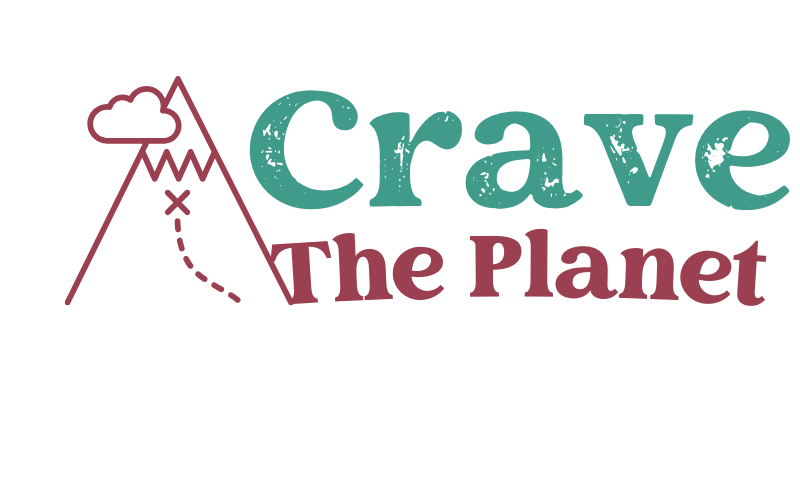
Prefer Video? Nijmegan March Youtube
More Resources
Discover gear that elevates your outdoor adventures. As a physical therapist, I’ve curated product comparisons to enhance safety and enjoyment, perfect for beginners or those with weary knees.
Physical Therapist Curated Gear Guides for Hikers & Skiers
- 🧎 Make your knees feel better while hiking and walking: Best Knee Braces for Hiking
- 🌳Make the downhills stop hurting and hike with more confidence Best Trekking Poles Review
- ⌚ Never get lost on the trail and navigate the wilderness safely with My Review of the Best GPS Watches for Hiking
- ❄️ Go hiking on uneven terrain safely: The Best Hiking Boots with Ankle Support
- Don’t get lost in the backcountry with : My Review of the Best 2 Way Radios for the Mountains
If you’re an avid rucker, you’ll definitely love going to the Nijmegen March in the Netherlands.

Author profile: Morgan Fielder is a Doctor of Physical Therapy and passionate hiker who believes in exploring the world on foot with good food. Follow her journey as she shares science-based hiking tips and advocates for sustainable tourism.

